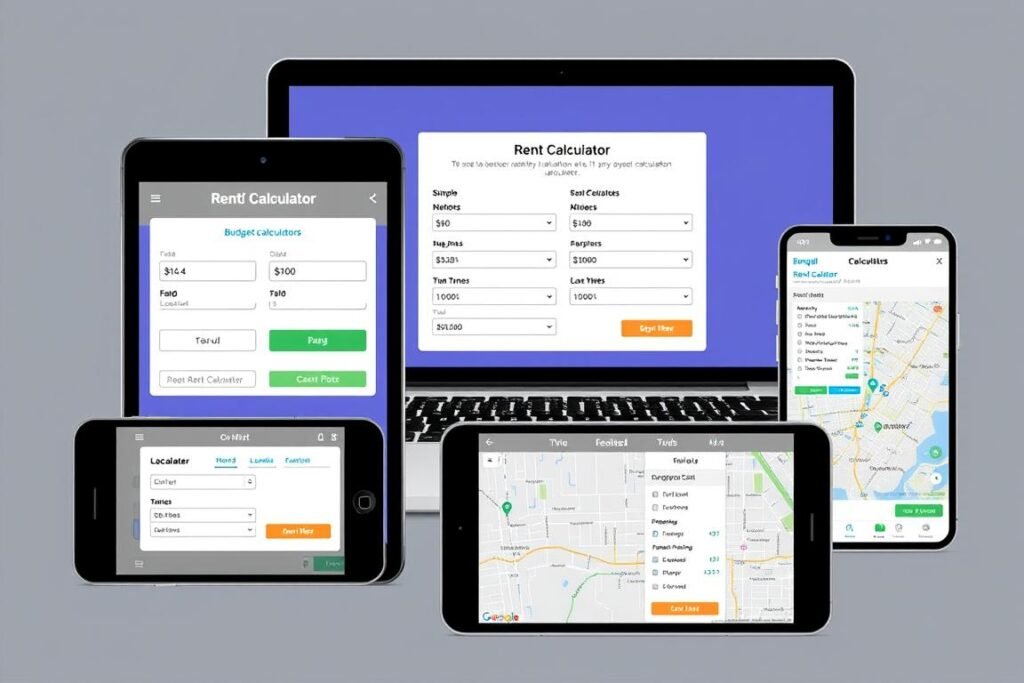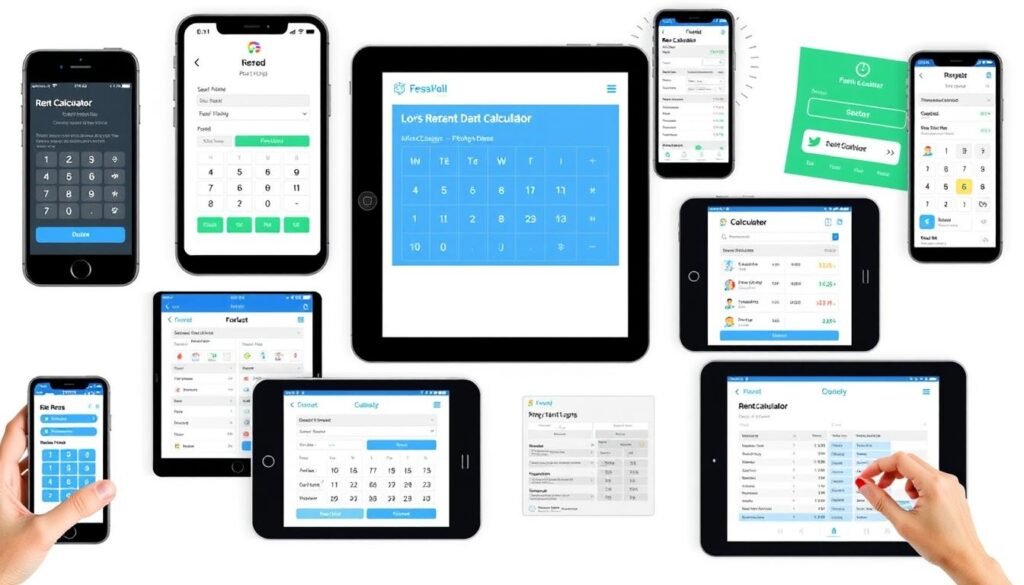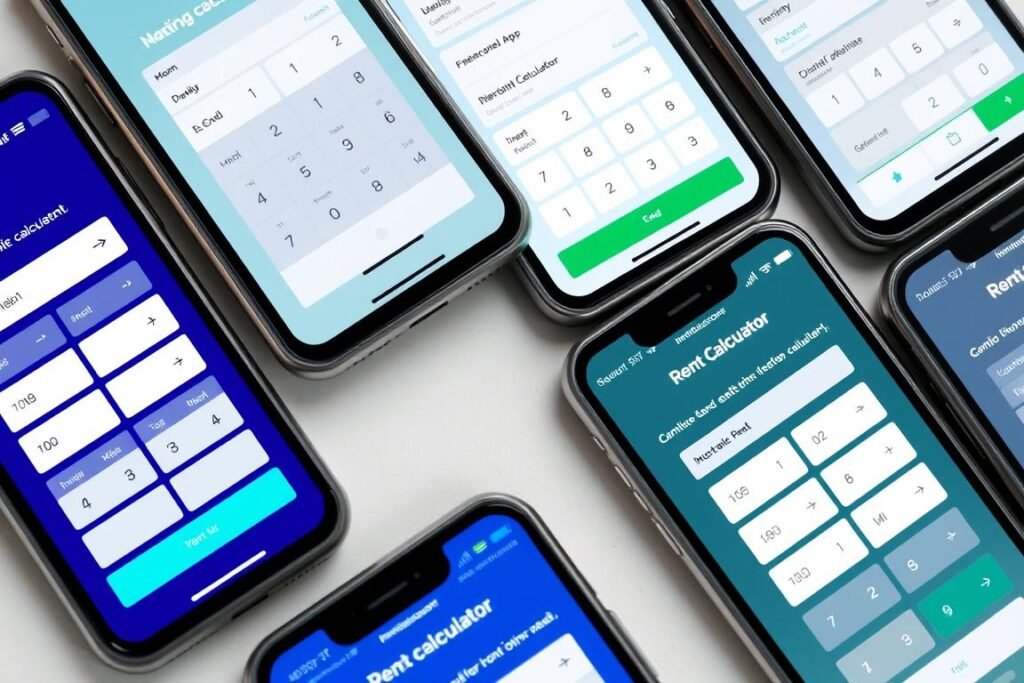Use our Rent Calculator to estimate monthly rental costs based on income, expenses, and location. Plan your budget and manage housing costs effectively.
Navigating the rental market can feel overwhelming, especially when trying to figure out how much you can realistically afford. A rent calculator serves as your financial compass, helping both tenants and landlords make informed decisions about monthly rent payments. Whether you’re searching for your first apartment or setting rates for your rental property, understanding how to calculate appropriate rent amounts is crucial for financial stability and peace of mind.
In this comprehensive guide, we’ll explore everything you need to know about rent calculators – from basic affordability ratios to advanced budgeting tools that consider your unique financial situation. By the end, you’ll have the knowledge to confidently determine a monthly rent that works for your budget without compromising your financial goals.
What Is a Rent Calculator and Why It Matters
A rent calculator is a specialized financial tool that helps determine how much monthly rent you can reasonably afford based on your income, expenses, and financial goals. These calculators apply established financial principles to your unique situation, providing personalized guidance rather than one-size-fits-all advice.
For tenants, a rent calculator prevents the stress of overextending your budget on housing costs that leave little room for other expenses or savings. For landlords, these tools help set competitive yet profitable rental rates that attract reliable tenants who can consistently make payments.
The importance of using a rent calculator extends beyond simple budgeting. When you understand your true rental affordability:
- You avoid the financial strain of excessive housing costs
- You maintain better control over your overall budget
- You can plan more effectively for savings and investments
- You reduce the risk of missed payments or eviction
- You gain confidence in your housing decisions
Most financial experts recommend spending no more than 30% of your gross monthly income on rent. However, this percentage can vary based on your location, additional expenses, and personal financial goals.
Key Factors That Affect Rental Affordability
Determining how much rent you can afford involves more than just your monthly income. Several important factors influence your ideal rent budget:
Income-to-Rent Ratio
The most common guideline is the 30% rule, which suggests limiting your rent to 30% of your gross monthly income. For example, if you earn $4,000 per month before taxes, your rent should ideally not exceed $1,200.
Some financial advisors recommend the more comprehensive 50/30/20 rule, where:
50% for Necessities
Housing, utilities, groceries, transportation, and minimum debt payments
30% for Wants
Dining out, entertainment, shopping, and other discretionary expenses
20% for Savings
Emergency fund, retirement contributions, and debt reduction beyond minimums
Location Considerations

Rental costs vary dramatically by location. Urban centers typically command higher rents than suburban or rural areas. Within cities, neighborhood differences can significantly impact rental prices for similar properties.
When evaluating location, consider:
- Proximity to your workplace (and associated commuting costs)
- Access to public transportation
- Neighborhood safety and amenities
- School district quality (if applicable)
- Local cost of living beyond rent
Utilities and Additional Expenses
Your rent payment is rarely your only housing expense. When calculating affordability, factor in:
| Expense Category | Typical Monthly Cost | Notes |
| Utilities (electricity, gas, water) | $100-300 | Varies by property size, location, and season |
| Internet and cable | $50-150 | Depends on service level and provider |
| Renter’s insurance | $15-30 | Essential protection for your belongings |
| Parking fees | $0-300 | Common in urban areas |
| HOA or building fees | $0-500 | May apply in certain properties |
Debt-to-Income Considerations
Your existing debt obligations directly impact how much rent you can reasonably afford. Lenders typically recommend that your total debt payments (including rent) not exceed 36% of your gross income. This means if you have significant student loans, car payments, or credit card debt, you may need to target a lower rent-to-income ratio.
Types of Rent Calculators Available

Not all rent calculators are created equal. Different tools offer varying levels of detail and customization to help you determine your ideal monthly rent:
Simple Percentage-Based Calculators
These basic calculators apply the standard 30% rule to your income. You input your monthly or annual income, and the calculator returns a recommended maximum rent amount. While straightforward, these calculators don’t account for your unique financial situation beyond income.
Detailed Budget Calculators
These comprehensive tools consider your complete financial picture, including:
- Income (including variable or secondary income sources)
- Existing debt payments
- Monthly expenses beyond housing
- Savings goals
- Tax obligations
By accounting for these factors, detailed budget calculators provide a more accurate and personalized rent recommendation that aligns with your overall financial health.
Location-Specific Rent Calculators
These specialized tools factor in your desired location to provide more contextual recommendations. They often include:
- Local cost of living adjustments
- Average utility costs for the area
- Typical rental prices for different property types
- Neighborhood-specific insights
Location-specific calculators are particularly valuable in cities with significant cost variations between neighborhoods or for those relocating to a new area.
Find Your Perfect Rent Budget Today
Stop guessing about your rental affordability. Use our recommended rent calculators to get a personalized assessment based on your income, location, and financial goals.
Step-by-Step Guide to Using a Rent Calculator Effectively

Follow these steps to get the most accurate and useful results from any rent calculator:
Collect recent pay stubs, bank statements, credit card bills, loan statements, and records of other regular expenses. Having this information ready ensures more accurate calculations.
This is your income before taxes and deductions. Include all reliable income sources, such as your primary job, part-time work, freelance income, and any regular financial assistance.
Add up all minimum monthly payments for student loans, car loans, credit cards, personal loans, and other debt obligations.
Record typical monthly costs for groceries, transportation, insurance, healthcare, subscriptions, and other regular expenses not related to housing.
Determine how much you want to save each month for emergencies, retirement, and other financial goals.
Enter your gathered financial information into your chosen rent calculator. More detailed calculators will have more fields to complete.
Examine the recommended rent amount. If it seems too high or low based on your comfort level, adjust your inputs or look for calculators that allow you to modify the rent-to-income ratio.
Interpreting Calculator Results
When reviewing your rent calculator results, consider these important points:
What the Calculator Shows
- Maximum recommended rent based on your inputs
- How rent fits into your overall budget
- Potential impact on savings capacity
- Comparison to standard affordability guidelines
What the Calculator Doesn’t Show
- Quality of life considerations
- Future income changes or expenses
- Local market conditions and availability
- Personal preferences and priorities
Remember that rent calculators provide guidance, not absolute rules. Your personal comfort with housing costs may differ from standard recommendations based on your lifestyle, priorities, and future plans.
Common Mistakes When Calculating Rental Affordability

Even with helpful tools, people often make these critical errors when determining how much rent they can afford:
Using Gross Income Without Considering Take-Home Pay
While the 30% rule applies to gross income, your actual budget operates on your take-home pay. Someone earning $5,000 monthly might have only $3,800 after taxes and deductions. A $1,500 rent (30% of gross) represents nearly 40% of their actual available income.
Overlooking Variable or Seasonal Expenses
Many expenses fluctuate throughout the year, such as utility bills that increase during extreme weather or annual expenses like insurance premiums or holiday spending. Your rent affordability should account for these variations rather than just your typical monthly expenses.
Ignoring the Full Cost of Housing
Rent is just one component of your housing costs. Many calculators don’t account for:
- Application fees and security deposits
- Moving expenses
- Furnishing costs for a new place
- Renter’s insurance
- Parking fees or storage costs
Failing to Plan for Financial Goals
Maximizing your housing budget can compromise other important financial objectives. Before committing to a rent amount, ensure you’ve accounted for:
- Emergency fund contributions
- Retirement savings
- Debt reduction plans
- Saving for major purchases
Not Adjusting for Location-Specific Factors
The standard 30% guideline may not be realistic in high-cost areas. In expensive cities, many residents spend 40-50% of their income on housing out of necessity. Conversely, in lower-cost areas, you might comfortably spend less than 30% and allocate more to other priorities.
Pro Tip: When using a rent calculator, run multiple scenarios with different income levels and expense assumptions to test how changes might affect your rental budget. This helps prepare for potential financial fluctuations.
Tips for Landlords on Setting Appropriate Rental Prices

For property owners, setting the right rent amount is crucial for attracting quality tenants while maximizing return on investment. Here’s how to use calculator tools effectively from a landlord’s perspective:
Research Comparable Properties
Before setting rent, use online tools to analyze similar properties in your area. Consider:
- Properties with similar square footage, bedrooms, and bathrooms
- Comparable amenities and features
- Similar neighborhood characteristics
- Recent rental trends in your specific location
Calculate Your Operating Costs
Your rental price should cover all property-related expenses while providing a reasonable return. Include:
| Expense Category | What to Include |
| Mortgage payments | Principal and interest payments if applicable |
| Property taxes | Annual amount divided by 12 for monthly impact |
| Insurance | Landlord insurance policies |
| Maintenance | Typically 1-2% of property value annually |
| Property management | If using a management service (usually 8-12% of rent) |
| Vacancy allowance | Budget for periods without rental income |
| HOA fees | If applicable to your property |
| Utilities | Any utilities you cover as the landlord |
Consider the 1% Rule
Many real estate investors use the 1% rule as a quick calculation: monthly rent should be approximately 1% of the property’s purchase price. For example, a property purchased for $250,000 would rent for around $2,500 monthly. While this isn’t applicable in all markets, it provides a useful starting benchmark.
Use Cap Rate Calculations
The capitalization rate (cap rate) helps determine if your rental price provides an adequate return on investment:
Cap Rate = (Net Operating Income ÷ Property Value) × 100
Where Net Operating Income = Annual Rental Income − Annual Operating Expenses
Most residential rental investors target cap rates between 4% and 10%, depending on the market and property type.
Balance Competitiveness with Profitability
While calculators provide valuable data points, also consider:
- Current market demand in your area
- Seasonal rental patterns
- Unique selling points of your property
- Your target tenant demographic
- Your long-term investment strategy
Practical Examples: Rent Calculations for Different Scenarios

Let’s examine how rent calculations work in real-world scenarios across different income levels and locations:
Example 1: Entry-Level Professional in a Mid-Size City
Profile: Alex earns $45,000 annually ($3,750 monthly gross) as an entry-level marketing coordinator in Columbus, Ohio.
Standard 30% Calculation: $3,750 × 0.30 = $1,125 maximum monthly rent
Take-Home Pay Reality: After taxes and deductions, Alex’s monthly income is approximately $2,900.
Additional Factors:
- Student loan payment: $350/month
- Car payment: $275/month
- Other expenses: $1,200/month
Adjusted Calculation: $2,900 − $350 − $275 − $1,200 = $1,075 available for rent
Conclusion: Alex should target rentals below $1,075 to maintain financial flexibility, slightly below the standard 30% recommendation.
Example 2: Dual-Income Family in a High-Cost Area
Profile: The Rodriguez family has a combined income of $120,000 annually ($10,000 monthly gross) in Seattle, Washington.
Standard 30% Calculation: $10,000 × 0.30 = $3,000 maximum monthly rent
Take-Home Pay Reality: After taxes and deductions, their monthly income is approximately $7,500.
Additional Factors:
- Childcare costs: $1,600/month
- Car payments: $550/month
- Other expenses: $3,000/month
- Savings goals: $800/month
Adjusted Calculation: $7,500 − $1,600 − $550 − $3,000 − $800 = $1,550 available for rent
Location Adjustment: Given Seattle’s high housing costs, the family may need to consider spending up to $2,500 (25% of gross income) and adjust other budget categories.
Example 3: Retiree on Fixed Income in a Low-Cost Area
Profile: Margaret has a fixed retirement income of $2,800 monthly in Knoxville, Tennessee.
Standard 30% Calculation: $2,800 × 0.30 = $840 maximum monthly rent
Additional Factors:
- Healthcare costs: $400/month
- Utilities sensitivity: Higher impact on fixed income
- Other expenses: $1,200/month
- No debt payments
Adjusted Calculation: Given Margaret’s fixed income and healthcare needs, a more conservative 25% ratio might be appropriate: $2,800 × 0.25 = $700
Conclusion: Margaret should target rentals in the $650-700 range to maintain financial security on her fixed income.
Remember: These examples demonstrate how standard calculations must be adjusted for individual circumstances. The “right” amount varies significantly based on personal financial situations, goals, and location-specific factors.
Recommended Free Online Rent Calculator Tools

These free online tools can help you determine your ideal rent budget or set appropriate rental prices:
Calculator.net Rent Calculator
Best for: Basic affordability calculations
Key Features:
- Simple 30% rule calculations
- Detailed educational content
- No registration required
Redfin Rent Affordability Calculator
Best for: Location-specific calculations
Key Features:
- Adjustable rent-to-income ratio
- Integration with local rental listings
- Customizable expense inputs
RentSpree Prorated Rent Calculator
Best for: Landlords and partial-month calculations
Key Features:
- Calculates partial month rent
- Multiple calculation methods
- Helpful for move-in/move-out scenarios
Mobile Apps for Rent Calculations

For on-the-go calculations, these mobile apps offer convenient rent affordability tools:
- Mint – Comprehensive budgeting app with rent affordability features
- Zillow Rental Manager – Helpful for landlords setting competitive rental rates
- NerdWallet – Financial planning app with rent calculation tools
- Apartments.com – Rental search app with built-in affordability calculator
Additional Considerations Beyond Basic Calculations

A comprehensive approach to rental affordability must consider these additional factors:
Security Deposits and Move-In Costs
Beyond monthly rent, prepare for significant upfront costs:
- Security deposit (typically equal to one month’s rent)
- First and last month’s rent (often required upfront)
- Application fees ($25-100 per application)
- Pet deposits or fees if applicable ($200-500)
- Moving expenses ($200-2,000 depending on distance and volume)
Rental Insurance Requirements
Many landlords now require tenants to maintain rental insurance. While relatively affordable ($15-30 monthly), this recurring expense should be factored into your housing budget. Rental insurance typically covers:
- Personal property protection
- Liability coverage
- Additional living expenses if the unit becomes uninhabitable
Lease Terms and Potential Increases
When evaluating rental affordability, consider the full lease term and potential future increases:
- Are you signing a 6-month, 12-month, or longer lease?
- What is the typical annual rent increase in the area?
- Are there penalties for breaking the lease early?
- Does the property have a history of significant rent hikes?
Utility Cost Variations
Utility costs can vary dramatically based on:
- Property size and insulation quality
- Climate and seasonal changes
- Energy efficiency of appliances
- Individual usage habits
When possible, ask the landlord or previous tenants about typical utility costs before committing to a rental property.
Make Informed Rental Decisions
Don’t leave your housing budget to chance. Use our recommended rent calculators to find your perfect balance between comfortable living and financial stability.
Share this article with friends and family who are navigating the rental market!
Conclusion: The Importance of Proper Rent Calculation
Determining the right amount of rent for your budget is more than a simple calculation—it’s a crucial financial decision that impacts your daily life and long-term financial health. A well-calibrated rent budget provides the foundation for housing stability while allowing you to meet other financial obligations and work toward your goals.
By using rent calculators and considering all the factors we’ve discussed, you can approach your housing decisions with confidence and clarity. Remember that while general guidelines like the 30% rule provide a useful starting point, your ideal rent amount should reflect your unique financial situation, location, and priorities.
Whether you’re a tenant searching for your next home or a landlord setting rental rates, taking the time to calculate appropriate rent amounts leads to better outcomes for everyone involved. Financial stress from excessive housing costs can be avoided with proper planning and realistic expectations.
Use the tools and strategies outlined in this guide to find your perfect rent balance—one that provides comfortable housing while supporting your overall financial wellbeing.